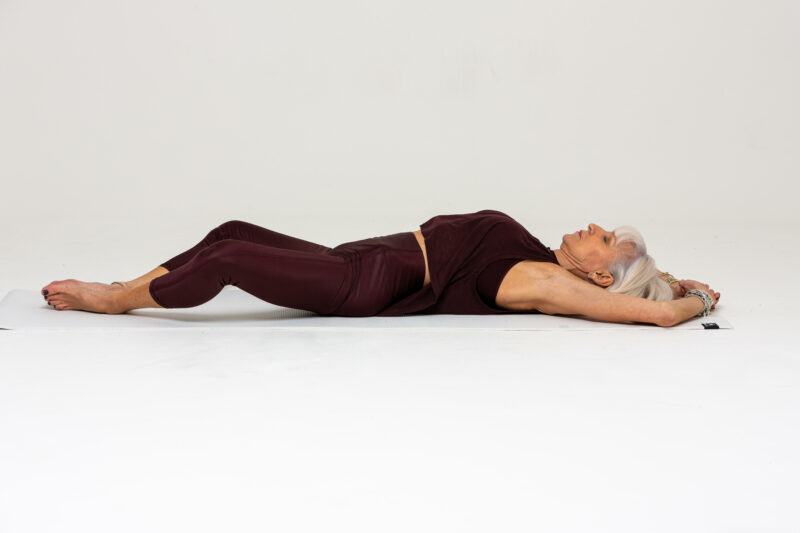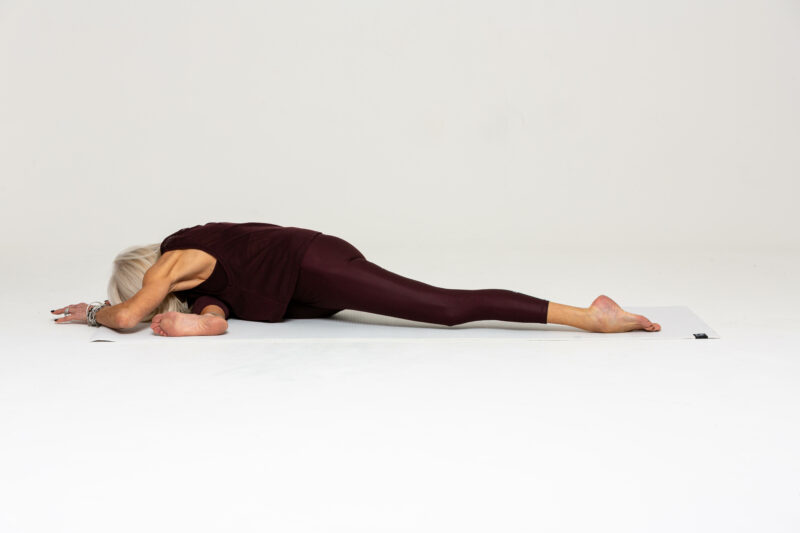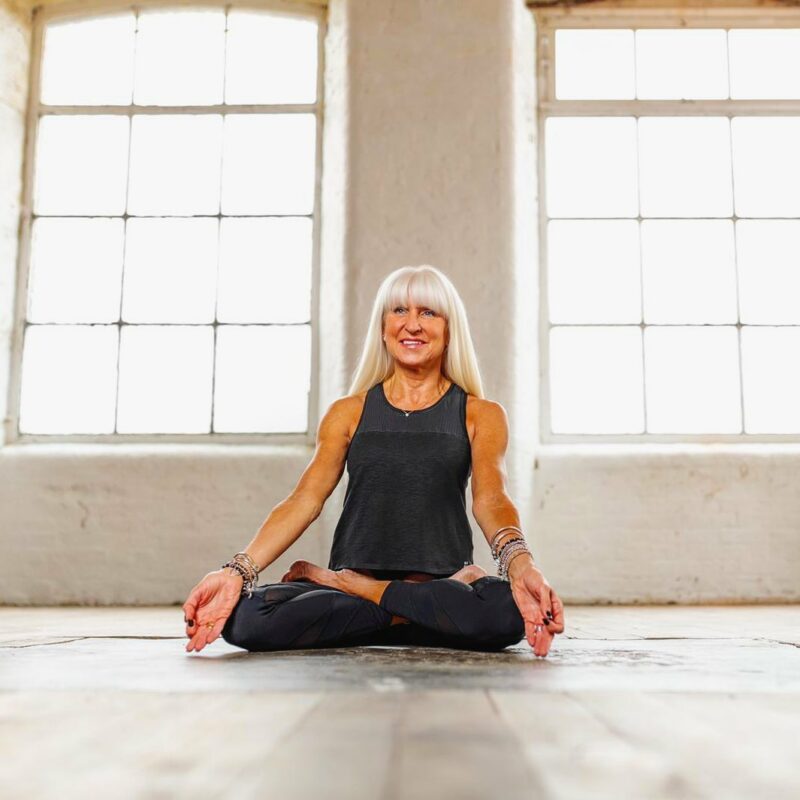Did you know? An estimated 30-50% of the UK population will experience insomnia symptoms. Insomnia can be caused by a factor of things, such as stress, anxiety, room temperature, uncomfortable mattresses, and beds. But the good news is Insomnia can get better by changing our sleeping habits. One great way to relax and improve your sleep naturally is through yoga.
We have yoga expert Clare Broomhead from yoga on the edge who takes us through her favourite postures to prepare for restful sleep.
Clare’s story
My yoga journey started due to an injury, I fractured three vertebrae in my Thoracic spine due to a violent seizure. This left me in a back brace and temporarily, I lost the use of my legs. Having previously been an exercise class addict, this was very difficult for me to come to terms with. In the pursuit of finding some form of exercise that I would be able to partake in, I discovered yoga.
The deeper, spiritual side of yoga has huge benefits to all who practice. The true essence of yoga is to remove the fluctuations of the mind. Using both movement and breath, the aim is to quieten the continual whirring of thoughts to create a state of tranquillity.
How does yoga aid sleep?
By using yoga asana practice, deep lengthened breath, and meditation techniques it is possible to activate the parasympathetic nervous system, our rest and digest system. This will slow the heart rate and control the bodily functions as we move into a rest state thus helping the body to relax. With this calmed state, much better sleep is possible.
To aid sleep – concentrate on lengthening the breath with deep inhalations and exhalations, focus on the breath to calm the mind. In terms of postures, it’s sometimes best to keep it simple; legs up the wall (Viparita Karani) is a restorative pose that has many benefits for the body, including promoting relaxation, making it a fantastic posture to aid with sleep. Click here for a free tutorial on how to achieve and feel the benefits of this posture.
Postures to try at home
Bound Angle or Supta Baddha Konasana

Bend your knees and place the soles of the feet together allowing the knees to roll out to the side. The hands can either be placed by the side of the body palms up or overhead grabbing alternate wrists. This pose really helps release tension in both the hips and shoulders as you let the knees and shoulders release down using gravity. Both the hips and the shoulder girdle are the areas we tend to carry lots of our stress and tension. Releasing this tension in the evening will help relax the body and aid a great night’s sleep.
Pigeon or Rajakapotasana

Bring one of your shins towards the front of the mat and lengthen the other leg down the mat behind you. Fold the upper body down and relax into the pose perhaps resting down onto a cushion if preferred. This pose aids opening to the hips plus also lengthens the psoas muscle, the major hip flexor muscle. The hip flexors can get so tight with the amount of sitting we do in our society. Shortening the psoas muscles can create issues in the lower back. Relaxing into this pose, using the weight of the upper body can deepen the stretch.
Butterfly or Bhadrasana
 This pose helps to bring calm and stability to the mind. Bring the soles of your feet together and have the legs in a diamond shape and allow the body to drape over the legs. The spine is rounded and so tension in the lower back is relieved as the back muscles are stretched. Tension in the hip sockets is released as the knees ease down to the mat with the aid of gravity.
This pose helps to bring calm and stability to the mind. Bring the soles of your feet together and have the legs in a diamond shape and allow the body to drape over the legs. The spine is rounded and so tension in the lower back is relieved as the back muscles are stretched. Tension in the hip sockets is released as the knees ease down to the mat with the aid of gravity.
Relax the upper body and use the weight of the torso to ease into the posture deeper. In each of these poses, try and lengthen out the inhalation and exhalation using each exhalation to see if the body would like to ease into the posture further and deepen the asana posture.
Cross legged or Sukhasana

Sit with your ankles lined up, elevating the hips by sitting upon a block or cushion. Softly close your eyes and start to tune into the rhythm of your breath and become aware of your heartbeat. Inhale and lengthen your spine; exhale and ground down through your sit bones. Rest your hands on your knees or into your lap.
As you lengthen out each inhalation and exhalation, bring your mind’s focus onto the breath detaching from the constant chatter that goes on in the mind. Work towards discovering a period of total calm and tranquility whilst just observing your breath.
This posture, together with Savasana (gradually relaxing one body part at a time, one muscle at a time, and one thought at a time) allows you to truly connect with your body and breath to connect with your inner calm. For Savasana, lie down with the feet separated and toes rolling out whilst the hands are down by your side with the palms facing up. The closing posture of all asana practice.
There are so many different options in yoga that once you start practicing you will find that your yoga finds you. With the right instructor, it is possible to develop a regular practice that provides all the benefits yoga has to offer.
Follow yogaonthedge on Instagram, or head to their website to book a class today!

